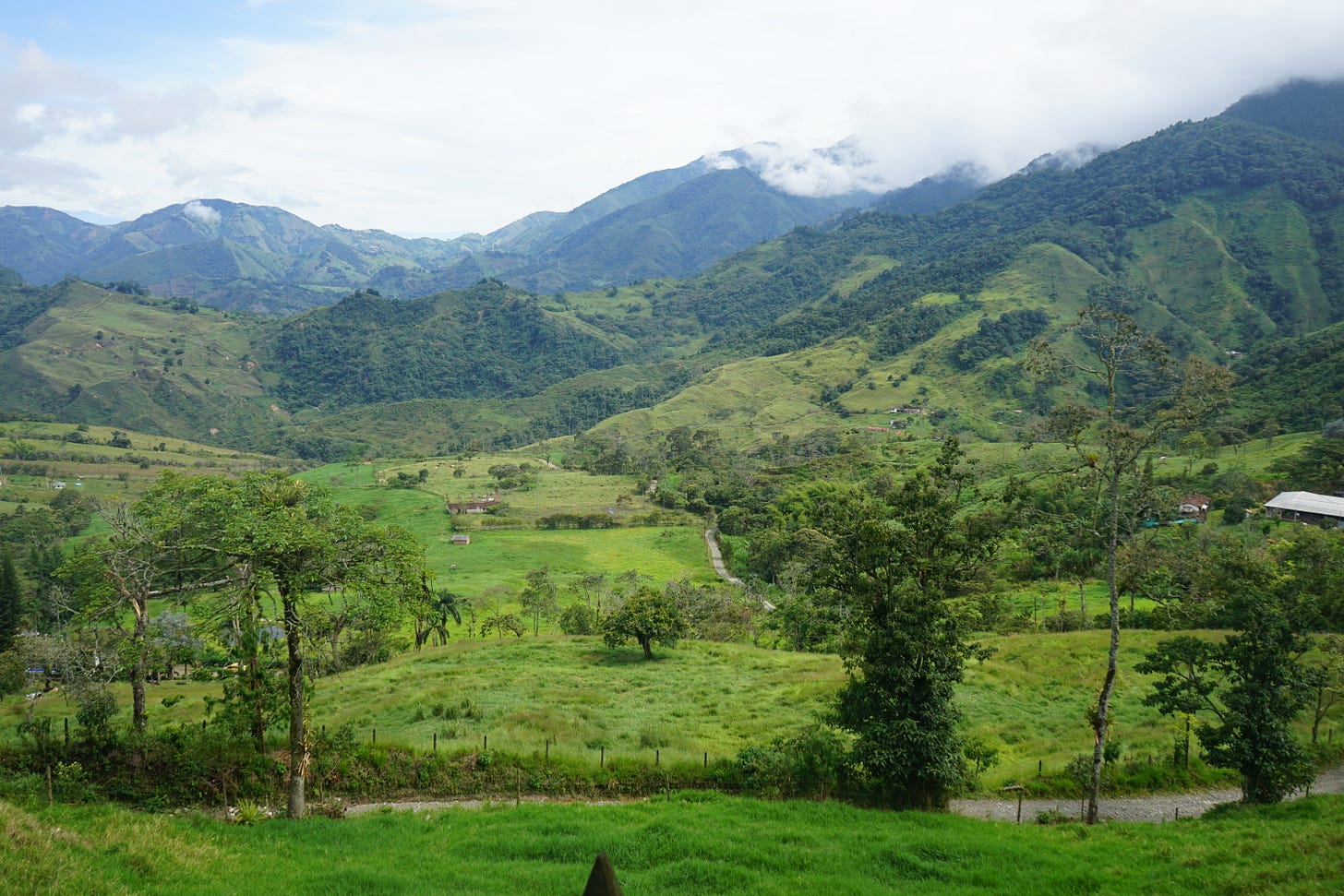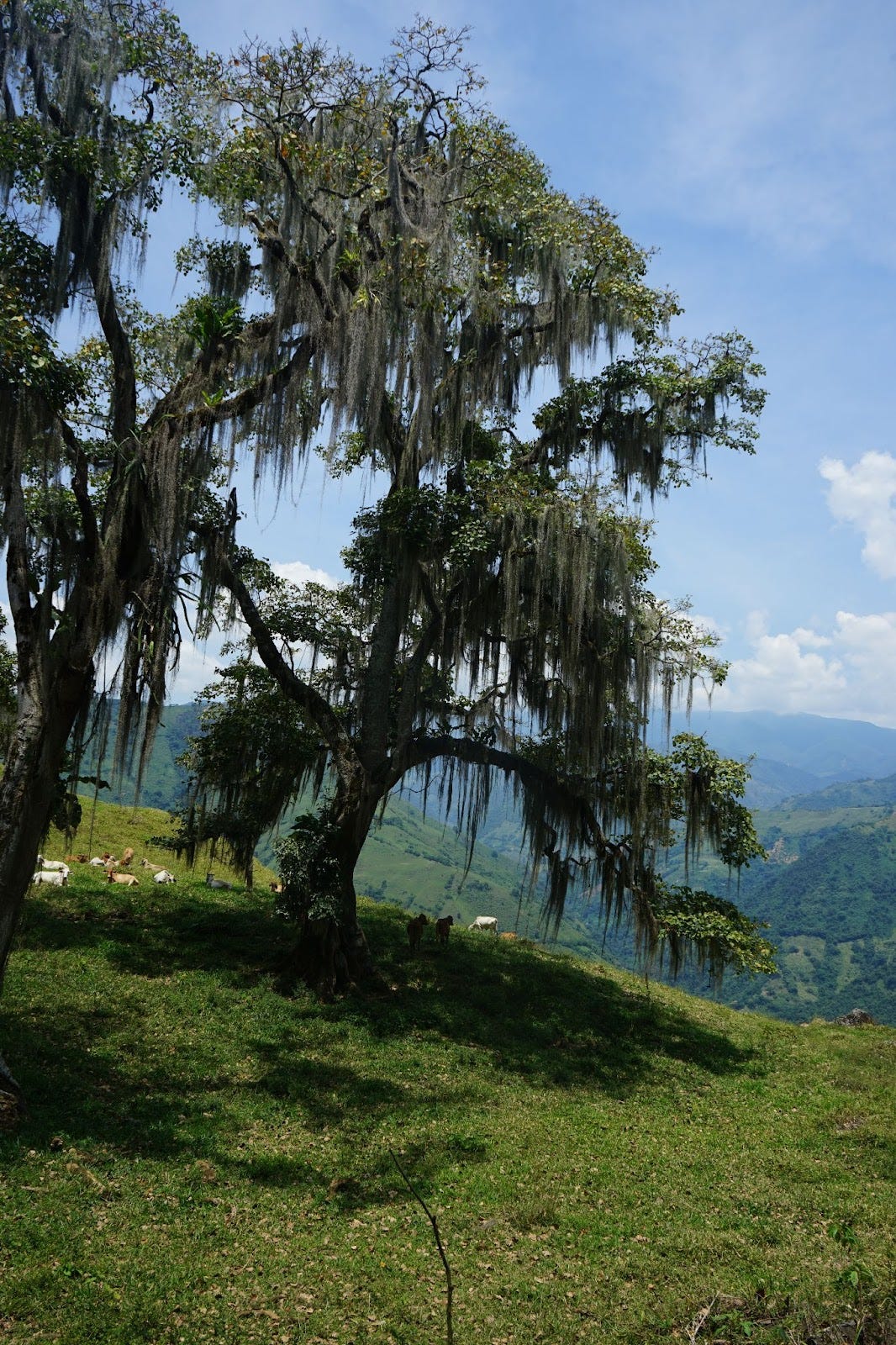Field Dispatch #1 - Launch Edition
Welcome to our first substack!
So, what are OffMap Media and the Field Dispatch?
We founded OffMap Media to uncover the hidden stories of the Andes, the world’s longest mountain range. Fueled by curiosity, determination, and a touch of madness, we are cycling its entire length—from Colombia to Argentina—bringing untold narratives to life along the way.
We believe this work is valuable. Budget cuts have left many news organizations unable to send reporters into the field. As a result, vast parts of the world are becoming news deserts—places where crucial stories go untold and rarely reach the outside world. The Andes, despite their profound economic, cultural, and natural significance, are no exception.
We aim to help fill this gap by traveling to places few journalists visit and connecting local stories to global developments. Expect stories about how corruption wreaks havoc on small towns far from national capitals, the impact of climate change on local communities, and the occasional piece on sports or culture. These stories, along with reflections on our journey, will be featured in our monthly newsletter, the Field Dispatch.
Beyond the Field Dispatch, we’ll publish In Their Own Words, a series where you’ll hear directly from the people we meet along the way. The first installment will feature local business owners from Envigado—a love letter to the people who made our home for the past several years feel so special.
As we pedal south from Colombia to Argentina, we’ll continue to evolve. We have plenty of ideas, but for now, we’re starting simple.
Our Ask:
We invite you to subscribe to OffMap Media’s Substack, Instagram, and Bluesky accounts and invite others who might be interested to do so too. We also set up a paid version. For the price of $5 (just one coffee or beer a month) you can support our independent, on-the-ground journalism.
How Cattle Killed This Town
For our first newsletter, we went to Armenia. Not the country, nor the other, better-known Colombian city with the same name, but a village just 50 kilometers from Medellín, Antioquia’s capital. Even there, just a day’s bike ride away, many have never heard of this village. This is the story of how a once-thriving town dwindled after, locals say, drug money arrived.
A peaceful town is slowly dying. The population of Armenia has dropped in the past decades, showing that even towns spared direct violence have not escaped the secondary effects of the Colombian drug trade and conflict.
Armenia is located in the department of Antioquia. It stands as a fortress on top of a mountain towering over the Rio Cauca, Colombia’s second biggest river. The mountain’s slopes are mostly covered with large swats of grassland, habituated by cows grazing or escaping the heat under the few trees dotting the landscape.
It is this cattle that changed a prosperous town into a shadow of its former self. In the 1980s and 1990s, investors bought farms producing labor-intensive crops like coffee, beans, sugarcane, and corn, and turned them into cattle ranches. Consequently, the need for workers diminished.
"Farms that once employed 40 to 60 workers now require only one or two” Didier Herrera, a baker and amateur historian, told us. “Armenia has died," he said.
Of the 8,000 people who once lived here, only about 5,000 remained in 2018 according to Colombia’s latest census data. That number is now closer to 4,000, according to residents.
Colombia urbanized at a dizzying speed as armed conflict displaced whole communities from the countryside to the cities throughout the 20th and early 21st centuries. Armenia was one of the lucky towns that mostly escaped this brutal violence yet its population has collapsed.
Residents point to drug traffickers and their frontmen, who they say acquired much of the land for cattle ranching. In general, these deals require no violence. Farmers take the cash offers and leave, though many soon realize they have sold their land too cheap.
We could not find records or court cases on illicit funds used to purchase land in Armenia. Nor could we speak to the public prosecutor as the person who held that position had recently passed away and had not been replaced when we visited.
However, Colombian criminals often use cattle ranching for money laundering, paying for the land in cash and betting that its value will grow over time. The cattle ranching enterprise itself is usually a placeholder: one that requires minimal investment in labor while the criminals wait for the land to appreciate so they can realize their (now legal) profit.
In Armenia, the human cost of this shift from farming to ranching is undeniable. As agricultural jobs disappeared, so did its people.
“Today we have little coffee production and few workers, we’ve become a town of old people,” Rigoberto, a retired coffee farmer, said.
The Bicycle Diaries
In this section, we’ll keep you updated on our trip, sharing highlights and more technical information on the route we take. To get to South America’s most southern city, Ushuaia, we’ll cycle through Colombia, Ecuador, Peru, Bolivia, Chile, and Argentina. But the trip will take at least a year, realistically longer and our plan will likely change as we make our way south.
On a typical day, we cover about 50 kilometers and ascend 1000 to 1500 meters. It is the latter more than the former that limits how fast we go. That, and the condition of the road.
We avoid main roads as much as possible, instead, choosing secondary roads, often unpaved, steep, and remote. The rewards are many. We see the parts of countries few foreigners visit. We go slow, giving ourselves space to strike up conversations along the way. The bicycle makes us approachable, meaning that sources who would usually be hard to reach often come up to us.
Our bikes and gear are carefully chosen to align with our goals. We carry only the essentials: minimal clothing, durable components, fat tires, and equipment to camp, write, photograph, and conduct interviews.
Many questions we get concern safety. Over years of reporting on organized crime and corruption in Latin America, we’ve trained in first aid, designed security protocols for high-risk areas, and worked in challenging environments. We carry an extensive first-aid kit, GPS navigation, a GPS messenger, and have security contacts wherever we go.
If you’re considering a trip like ours, we’ve compiled information from previous journeys here. We’d also be happy to help you plan your own adventure!
Words Out There
While many of our stories will go directly to our readers through OffMap Media, we’re also excited to pitch and collaborate with traditional media when the story calls for it. In this section, we’ll share the work we’ve published outside of OffMap Media.
This month, Anastasia’s 2023 investigation, The Gangster Governor of Zulia: The Rise and Fall of Venezuela’s Omar Prieto, made the shortlist for the prestigious Fetisov Award in the category of outstanding investigative reporting. You can read the full investigation, which she wrote for InSight Crime, here and see the Fetisov announcement here. The winners will be announced in April, and we’re very excited to see where it goes!
In November, Douwe published an analysis of the COP-16 negotiations in the Dutch magazine De Groene Amsterdammer. Overall, the results of the two-week summit were disappointing; you can read why here (in Dutch).
The Context Shelf
Cycling through the Andes often means hours of pedaling up steep mountains at 5 kilometers per hour. During these long stretches, we spend a lot of time listening to books and podcasts. Setting up camp before the sun goes down (which happens around 6 pm in this part of the world) also gives us extra time to read. In this section, we’ll share our favorites: the books, podcasts, and articles that help us better understand this continent, its culture, politics, and history.
As we begin our journey through Colombia, we’re highlighting two history books—one originally written in Spanish, the other in English—that we highly recommend for anyone who wants to better understand this country.
‘Colombia: una Historia Mínima’ by Jorge Orlando Melo
This history primer really is*minimal*, taking you from pre-colonization through the present day in just over 300 pages. It’s a great starting point for anyone, like us, who wants a compact overview of Colombian history to begin hanging everything else you’re learning about the country. Orlando Melo offers a snapshot of each era, with special attention to cultural and social shifts, as well as key political moments. He provides just enough to help you decide what specific topics, events, or figures in Colombian history you may want to dive into further.
We liked that organized crime and violence didn’t completely steal the spotlight. For instance, there are whole chapters dedicated to indigenous agriculture and customs at the start and a whole section in one of the final chapters on the role of foreigners throughout Colombia’s history.
‘Magdalena: River of Dreams’ by Wade Davis
Wade Davis’ Magdalena is the kind of book we aspire to write. It follows the mighty Magdalena River, the lifeline for Colombia’s biggest cities for centuries, from its source to the sea. In this book, Davis captures the essence of Colombian identity, blending his journey along the river with rich historical context. He delves into the legacy of Colombia’s violence, the resilience of its culture, and the deep, intertwined relationship between the river and its people.
Happy Holidays and thanks for reading, Anastasia & Douwe







